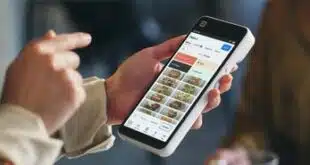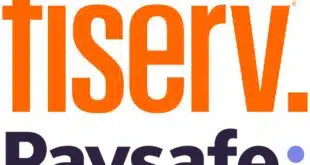Alex Chriss took over as CEO a year ago and wasted no time shaking things up. Now he’s on a tear to spark growth.
There’s no doubt Alex Chriss, PayPal Holdings Inc.’s chief executive and president since September 2023, has taken fully to heart his charge to boost the online and wallet powerhouse into even higher levels of growth and sales.
Just over a month after moving into the job that his predecessor Dan Schulman held for eight years, Chriss, on his first earnings call outlined how profit growth will come from every niche of the company.
That call was in November. A cadre of new executives joined him later that month to head PayPal’s small-business and financial-services efforts, its consumer groups and marketing, and its human resources.
After the 2023 holiday period passed, Chriss, 46 when hired by PayPal, took to the stage earlier this year to outline PayPal’s 2024 ambitions. He has announced several new PayPal products or partnerships through the year so far.
The list is long. Starting in October, PayPal made good on a promise that came under Schulman’s watch to enable its credit and debit cards to be added to Apple Pay. In November came the new executive team and then, in January, a slew of updates outlining some major 2024 initiatives, including the company’s Fastlane guest checkout service and improved promotional offers, such as cash back.
In February, there was more on the company’s branded-checkout push. In March, Tap to Pay on iPhone was added for Venmo Business profiles and U.S. Zettle POS users. After April arrived, the PayPal and Venmo wallets joined Visa+, the card brand’s interoperable peer-to-peer service, and the Xoom money-transfer service enabled customers to send funds in the USD stablecoin.
In July, Chriss returned to touting Fastlane, and in August PayPal said the checkout service would be available to merchants using Adyen’s payments platform. It also announced that month it had made it simpler for Fiserv merchants to connect to PayPal and Venmo.
The list doesn’t stop there. PayPal also says it will use upcoming Apple Inc. APIs to access the secure element on iPhones used in Europe. Apple, which has long sequestered control of the secure-element data vault on its NFC iPhones from non-Apple developers, also announced it would make the same APIs available to U.S. developers and those in six other nations.
“We are also looking forward to launching even more ways for consumers to use PayPal any time, any place with NFC technology, starting in Europe,” Chriss said this summer. “Expect to see more from us in the coming quarters to enable and incentivize our customers to use PayPal online and in person.” The company did not respond to a request for an interview with Chriss for this story.
In September, PayPal launched PayPal Everywhere, a new rewards program focused on the PayPal Debit Mastercard. And it began processing U.S. transactions for the Shopify Gateway through its PayPal Complete Payments, a service for marketplaces and platforms with multiple developer tools.
‘Signficant Strides’
That’s a whirlwind of initiatives for a short 12 months. But are all these moves paying off? One objective way to tell is by the numbers.
Chriss, who by September had completed four full quarters at PayPal—though the company’s third-quarter results were not available at publication—has seen PayPal’s 2024 first- and second-quarter 2024 revenue and net income increase compared to the 2023 periods.
First-quarter 2024 revenue and net income were 10% and 11.7% greater, respectively, and second-quarter revenue and net income this year were 8.2% and 13% greater, respectively.
That’s not all through sales growth. PayPal had layoffs of 9%, or approximately 2,500 employees, in January and shed up to 85 positions in Ireland, the technology news service TechCrunch reported in June.
Subjectively, opinions are generally favorable, though none of the decisions made under Chriss so far are certain to boost PayPal to the top of the online arena and keep it there. PayPal did not make Chriss available for an interview for this story.
“Overall, he is off to a good start but has a long way to go,” says Tony DeSanctis, senior director in Cornerstone Advisors’ payments practice. “Chriss is making the changes necessary to move PayPal back into a leadership role in digital payments.”
Chriss’s actions have won plaudits from at least some observers. “Since Alex Chriss took over as CEO, PayPal has made significant strides in streamlining operations and driving profitability,” says Sidharth Ramsinghaney, director of corporate strategy and operations at Twilio Inc., a San Francisco-based customer-engagement platform.
“His focus on reducing costs and enhancing efficiency has already started to bear fruit,” Ramsinghaney continues, “as evidenced by the positive market response and improved financial performance. I was personally betting on increased shareholder perception reflected in its stock price, but the overall industry is lagging.”
In the 12 months from mid-September 2023 to mid-September 2024, the closing price for PayPal’s shares increased 9.2%, going from $64.21 on Sept. 10, 2023, to $70.1 on Sept. 8, 2024. While that’s good growth, the shares are still nowhere near PayPal’s three-year peak of $278.11 on Sept. 19, 2021.
‘Behind the Curve’
One impression is that Schulman’s focus, in contrast with Chriss’s, was on user growth, says Christopher Miller, lead analyst of emerging payments at Javelin Strategy & Research.
His colleague Don Apgar, director of Javelin’s merchant-payments practice, says Chriss may be retrenching, tapping the strong suits held by PayPal. “Think about what PayPal was like 20 years ago,” Apgar says. It was hard to get a merchant e-commerce account back then and PayPal made that easier, but there hasn’t been much innovation by it since then, he says.
But Fastlane, the splashy new checkout service, is different. “You look at Fastlane and that’s a way now for PayPal to come to merchants and say that’s a way to add value,” Apgar says. “You have to add services that benefit the merchant.”
Fastlane arrives as competition among online-checkout services intensifies. Paze, a bank-backed online-checkout service from Early Warning Services LLC that comes preloaded with up to 150 million credit and debit cards from eight issuers (with more likely in the works), is launching and poses a formidable rivalry for online-checkout dominance.
Getting online merchants to add another payment option on their checkout pages can be a challenge, though Apgar suggests PayPal may have an advantage. “Because PayPal already is merchant-facing as a brand, they don’t have the same hill to climb as Paze does,” he says.
Though it goes unsaid, there’s a reason Chriss was brought in to help PayPal, which under Schulman concentrated on such initiatives as a so-called super app, a tech wonder that might have been more popular in places like China than in the U.S., observers say. Schulman backed the idea as a way to get more growth out of existing and new products.
“PayPal has been behind the curve. Its focus on building a super app for consumers left it missing the opportunity with its primary customers, which are the merchants,” DeSanctis says.
Fastlane is a prime example of the new emphasis, adds DeSanctis. “PayPal is trying to catch up to Shopify and other checkout solutions in the market that have surpassed PayPal in terms of ease of use and merchant value,” he says, speaking prior to PayPal’s Shopify processing tie-in announcement.
Now, Fastlane could have an impact on the checkout speed and conversion rates of participating merchants, Ramsinghaney says. “By partnering with Adyen to offer Fastlane, PayPal is not only improving checkout speed and conversion rates for merchants but also reinforcing its position as a leader in digital payments. This strategic move is likely to drive higher adoption rates and customer satisfaction,” he says.
‘Incremental Positives’
Even equity analysts are noticing Chriss’s actions, though not without some concern.
“We are fans of new CEO Alex Chriss and think new initiatives are incremental positives,” says a July industry report from William Blair & Co. LLC, noting Fastlane and another initiative, PayPal Complete Payments, as well a new small-business technology integrations, among other services.
Still, many hurdles remain for PayPal. “However, as we survey the fintech landscape, we view more challenges than upside drivers,” notes the Blair report.
Another Blair report, specifically a research note on PayPal from July, is sunnier. Here, Blair says PayPal is in “an enviable position as first mover in e-commerce, boasting a two-sided network and improving conversion rates, owing to innovative guest checkout technology, Fastlane, in our view.”
Now, PayPal is once again prepping for in-store PayPal acceptance, in which contactless payments and Apple Pay are strong. In September, as part of its push for the PayPal Debit Mastercard, PayPal launched a TV ad campaign featuring actor Will Ferrell touting the ability to pay everywhere, including in a store, with the card.
PayPal is not new to the effort of trying to build up its in-store channel. In the second quarter, U.S. e-commerce sales, which PayPal is most associated with, accounted for 16% of all U.S. retail sales, according to the U.S. Census Bureau.
To build its presence in-store, and in addition to the PayPal debit card and its new rewards program, PayPal is making Venmo, another of its peer-to-peer payments services, more business-friendly with Tap to Pay on iPhone for business customers, and secured for Venmo a coveted spot on eBay Inc.’s checkout pages.
“Venmo is another opportunity for PayPal to double down on its existing business,” Apgar says.
‘A Lower Cost Rail’
In-store transactions today consist of more than dipping a card. The popularity of contactless payments—both those made with a traditional chip-equipped credit or debit card and mobile wallets—is growing, and that could be an issue for PayPal, William Blair suggests in a report.
The report remains guarded about PayPal’s ability “to drive meaningful card present and Venmo monetization, particularly given the rise of competing contactless payments and Apple Pay, which we see as increasingly ubiquitous.”
Apple Pay is available not only with the iPhone mobile wallet, but also as an e-commerce checkout option. That, the growth of contactless payments—Visa says 50% of its U.S. face-to-face transactions are now tap-to-pay—and competitiveness from other payment-services providers like Adyen and Stripe are challenges for PayPal, the report says.
PayPal could look to use access to the secure element, which holds valuable and sensitive user and payment data in iPhones, to help with its PayPal everywhere claim. But caution is necessary with that, Miller says. “It’s unclear the extent to which Apple [will] open its [intellectual property].” Will it be full access or partial, just enough to appease regulators? he asks.
PayPal also may bolster its position with more P2P payment activity. Its connection to the Visa+ interoperable platform could entice more users, just as it might with PayPal and Venmo competitors.
“Creating a collective P2P solution presents some risk to becoming one of many in the Visa+ ecosystem, though there is little profit in the P2P space,” DeSanctis says. “The opportunity here may be the ability to grow and leverage Venmo for merchant acceptance.”
“Despite [Venmo] losing Amazon, big merchants like Starbucks, McDonalds, and eBay are accepting and promoting it as a lower-cost rail [for] traditional card transactions,” he adds. Amazon.com Inc. dropped Venmo as a payment option in 2023 after just a year a year, but in September added PayPal as a checkout option on Buy with Prime orders on merchants’ Web sites.
‘Hard Stuff’’
By focusing on its strengths, PayPal could fare well, though none of its actions this year under Chriss’s leadership guarantee that.
“PayPal’s ability to anticipate and respond to market trends is a key factor in its sustained success,” Ramsinghaney says. “With the strategic initiatives currently under way, PayPal is well-positioned for continued growth and success. Chriss’s focus on efficiency, innovation, and customer-centric solutions will likely drive the company forward, enabling it to maintain its competitive edge.”
DeSanctis says PayPal’s success now, under Chriss, will depend on its ability to catch up with merchant clients. “PayPal certainly has the scale and opportunity to turn this around, but it will take some time,” he says.
“PayPal’s significant market share gives it a greater ability to overcome the challenges than it otherwise would [have],” adds DeSanctis. “Overall, it has a good chance to maintain a key position in the market. While no one player will win in the space, PayPal is in the driver’s seat to be one of the winners in the space.”
PayPal, however, now has an enthusiastic leader who has yet to pause.
“I see a guy who knows how to run a business, which is different than someone who runs a perpetual business machine,” Javelin’s Miller says.
“The thing we’ve seen happen over the last year, [it] seems to me [that] was recognized and [he] is going to do the things to keep a successful business running,” Miller adds. “The business of running a business that makes money year-over-year is hard stuff. You grind out a margin.”





